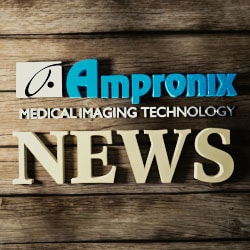Challenging The Technology Gaze
Orange County, CA - May 24th 2016 - Advances in medical imaging have fostered innovation in technology, medicine, and science, among many others fields. In the search for cures to anything from Alzheimer’s to cancer, the human race has gained the ability to look at someone’s molecular make-up, to discern their heritage from DNA samples, and even analyze their brain’s beautiful synaptic connections when listening to music. Although all this is neat and telling of the vast future before us, it’s also important to assess the process in which this information is gathered; to question if we are looking in the right direction.
In The Birth of the Clinic: An Archaeology of Medical Perception, French philosopher and modernity critic, Michael Foucault, outlines the historical events that created, what we consider to be, the medical profession. In it, he coins “the medical gaze,” a term used to describe the dehumanizing process in which the patient’s body is abstracted from their identity in medical settings.
Radiologists Benjamin Gray, MD and Richard Gunderman, MD, PhD, contemplate how Foucault’s 1963 findings still have relevancy in Academic Radiology, a publication for the Association of University Radiologists. Critically, they argue that medical images become prioritized over first-hand accounts by patients. In the publication, the co-authors state: “there is a sharp distinction between the seer and the seen, the radiologist and the patient. So great is this divide that in many cases, radiologists could not identify the photograph of a patient whose radiologic images they just interpreted.”

The epistemic shift stems from the fact that whereas doctors once focused on asking “what’s the matter,” physicians began to ask “where does it hurt?” Thus, there was a simultaneous move away from treating the patient as a whole specimen, replacing it, instead, with a focus on specific areas of the body where pain could be analyzed.
In the field of radiology, it’s only the images that matter—it is the x-ray or MRI results that speak to the specialist, tasked with the important job of interpreting the images and voicing the story they tell.
There’s no simple solution to rectifying this issue. It necessarily entails an entire mentality change in how radiologists and doctors communicate with patients. Recent innovations, like GE’s Cloud, present a hopeful future. Transparency with information technology will supply patients with the knowledge necessary to become chief participants in the care they receive.
Ampronix carries a multitude of products that highlights the best technology that the medical imaging community currently offers, but it is ultimately up to the physicians to provide optimized patient care. The only way to undermine the medical gaze is to utilize technology in tandem with providing wholesome patient care; the type of consideration that moves beyond looking at merely symptoms.
Contact Ampronix:

Email: info@ampronix.com
International Sales: +1 949-273-8000
Domestic Sales: 1800-400-7972 for US and Canada
Follow Us:
Share This Article:
View our Product Catalog Online Here
About Ampronix
Ampronix is a renowned authorized master distributor of the medical industry's top brands as well as a world-class manufacturer of innovative technology. Since 1982, Ampronix has been dedicated to meeting the growing needs of the medical community with its extensive product knowledge, outstanding service, and state-of-the-art repair facility. Ampronix prides itself on its ability to offer tailored, one-stop solutions at a faster and more cost-effective rate than other manufacturers. Ampronix is an ISO & ANSI/ESD certified facility. To learn more go here.
Challenging The Technology Gaze Orange County, CA – May 24th 2016 – Advances in medical imaging have fostered innovation in technology, medicine, and science, among many others fields. In the search for cures to anything from Alzheimer’s to cancer, the human race has gained the ability to look at someone’s molecular make-up, to discern their heritage from […]



